To keep your lawn green and lush, you need a balanced approach in which fertilizers become central. High nitrogen lawn fertilizers are the most outstanding among many types of fertilizers available on the market as they stimulate fast growth while improving turf grasses’ vibrant green color. This comprehensive guide will examine how high nitrogen fertilizers work, their advantages, and the techniques used to guarantee that your lawn attains its optimum potential. We will also explore various kinds of high-nitrogen fertilizers, compare their effectiveness, and provide suggestions for choosing the right product for your particular lawn requirements. Such knowledge would enable you have healthier, more resistant lawns that are attractive too .
What is High Nitrogen Lawn Fertilizer?
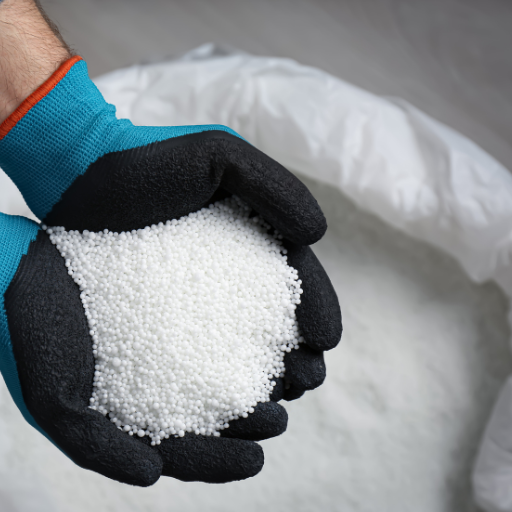
High nitrogen lawn fertilizer is characterized by its richness in nitrogen compared to other essential nutrients such as phosphorous and potassium. Nitrogen is crucial for photosynthesis, which enables the production of food that turfgrass requires for high-speed growth. These fertilizers are formulated with high amounts of nitrogen and this stimulates quick growth of leaves thereby resulting in dense green foliage. It makes sense to apply these fertilizers when grass is growing very fast during the growing season. The increased nitrogen levels not only enhance vibrancy but also help to build up the overall density and resilience of the lawn thus making it able to withstand stresses like drought, disease, and foot traffic.
Understanding High Nitrogen Fertilizer
High nitrogen fertilizers supply turfgrass with nitrogen that can be easily taken up through roots. The effectiveness of these fertilizers is often determined by their chemical forms of nitrogen such as nitrate (NO3-), ammonium (NH4+), or urea (CO(NH2)2). Each of these has distinct features; for instance, nitrate is readily available for plant uptake while ammonium and urea need to be nitrified before they become available. The advised rate of applying nitrogen normally varies from 0.5 to 1 pound per 1,000 square feet depending on turf species and local environmental conditions.
The benefits derived from using high-nitrogen fertilizers are many-sided. More chlorophyll production occurs in response to excess nitrogen directly influencing photosynthesis hence strong vegetative development. Adequate supplies of this element also improve recuperative potential after damage caused by wear at athletic fields or mowing at home lawns. Moreover, appropriate applications of reactive N result into a densely populated resilient lawn which helps against pests as well as diseases requiring less chemical control measures.
For example, calibration ensures uniformity when spreading while intervals recommended between applications prevent leaching and running off of the substance.The frequency becomes less when slow-release forms are used, but a constant nitrogen source is slowly released into the soil. This in turn minimizes the possibility of nutrient loss and reduces potential harm to the surrounding environment. Once you comprehend these technicalities, one can easily handle nutritional requirements for his or her lawn henceforth; this will ensure that its beauty and health are maintained over time.
Why Nitrogen is Vital for Lawn Maintenance
Lawn care critically depends on nitrogen due to its vital part in plant growth and development. It is a basic component of chlorophyll, the molecule that drives photosynthesis and allows plants to transform sunlight into energy. When there is an insufficient supply of nitrogen, leaves turn yellow and plants do not grow well suggesting the ineffectiveness of chlorophyll production. Furthermore, nitrogen contributes to the creation of amino acids that are necessary for cell division and building proteins.
There should be respect for certain technical parameters to ensure proper availability and use of nitrogen:
- Application Rate: The typical recommendation ranges from 0.5 to 1 pound of nitrogen per 1,000 square feet per application. This range can be adjusted based on the specific turfgrass species and environmental conditions.
- Form of Nitrogen: Use a combination of nitrate, ammonium, and urea forms to balance immediate and long-term nitrogen availability. Plants quickly utilize nitrate, while ammonium and urea undergo nitrification to become accessible.
- Application Techniques: Calibrating spreaders to achieve uniform distribution is crucial. Follow manufacturer guidelines to avoid over-application, which can lead to leaching and runoff.
- Intervals Between Applications: Adhere to recommended intervals, which typically range from 4 to 6 weeks, depending on the formulation used. Slow-release nitrogen formulations reduce the frequency of applications while minimizing nutrient loss.
- Soil Testing: Conduct regular soil tests to monitor nitrogen levels and adjust fertilization practices accordingly to avoid deficiencies or excesses.
These parameters ensure that your lawn receives the necessary nitrogen in a balanced manner, promoting healthy, vigorous growth and enhancing its resilience against environmental stresses.
Benefits of Using Nitrogen Fertilizer for Grass
The vitality of grass relies heavily on nitrogen fertilizer because it is important for promoting healthy growth, enhancing color and making the grass thicker. Its availability makes chlorophyll synthesis possible which in turn results to a rich green look. Goodly fed grass has more developed roots and shoots, therefore can withstand harsh environmental conditions e.g. droughts and excessive walking on the lawn.
- Enhanced Growth and Recovery: Adequate nitrogen promotes rapid cell division, resulting in faster recovery from damage and stress. This leads to a more resilient lawn.
- Improved Color and Density: Nitrogen is fundamental for synthesizing chlorophyll, contributing to the deep green color of healthy grass. Dense grass growth minimizes bare spots and improves overall aesthetic appeal.
- Increased Drought Tolerance: Proper nitrogen levels enhance root depth and mass, improving water uptake and retention. This allows grass to withstand periods of drought without significant stress better.
- Better Disease Resistance: A well-nourished lawn with balanced nitrogen levels is less susceptible to common turfgrass diseases. Enhanced vigor and density prevent pathogen establishment and spread.
- Efficient Nutrient Utilization: Implementing regular soil testing and adhering to calibrated application rates ensures that grass receives the precise amount of nitrogen required, thus optimizing nutrient uptake and reducing waste.
These benefits underscore the importance of nitrogen fertilizer in maintaining a healthy, aesthetically pleasing, and resilient lawn. One can achieve optimal grass growth and sustainability by adhering to the technical parameters outlined.
How to Choose the Best High Nitrogen Lawn Fertilizer?
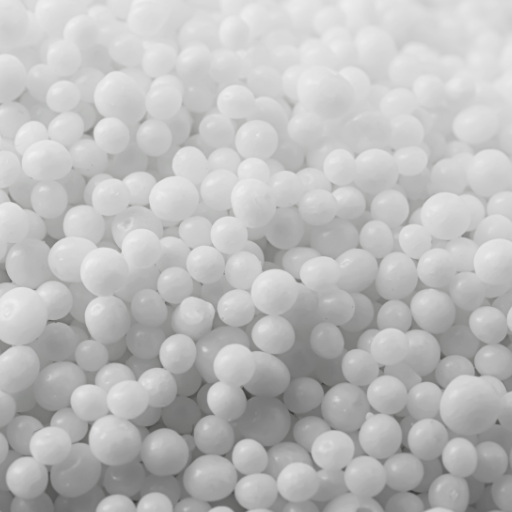
Another crucial thing to keep in mind is that the best lawn fertilizer for high-nitrogen grass must fulfill a few vital elements for achieving healthy and well-performing turf. The first step to take when choosing the appropriate fertilizer is to evaluate the nitrogen source used; generally, fertilizers are available either as quick-release, slow-release or organic. For example, quick-release fertilizers make nitrogen readily available but would require frequent application compared with other options, which provide a more consistent nutrient supply, thereby minimizing the loss of nutrients through leaching.
Also, check the NPK ratio on the label of the fertilizer package (Nitrogen, Phosphorus, Potassium). A higher first number means that the product has high nitrogen levels because it helps promote robust growth and dark green color composition.
Also, remember whether there are any additional micronutrients, such as iron, that could improve the turf’s general hue.
Finally, however, choose a suitable fertilizer based on your type of grass and local climate conditions since different types of lawns and environmental factors affect nutrient requirements. It can be helpful to talk with local extension agents or turf professionals who can advise you on the most appropriate fertilizers for your specific situation.
Types of Nitrogen Fertilizers: Liquid, Granular, and Slow Release
Liquid Nitrogen Fertilizers: Liquid fertilizers of nitrogen are highly recommended for quick nutrient availability, suitable for fast repair of nitrogen deficiencies. These fertilizers are blended with water and sprayed over using a sprayer, ensuring uniform distribution. They make ideal foliar feeds because they can be absorbed directly by the plants leaves. However, due to their solubility in water, liquid fertilizers leach easily and should therefore be applied more frequently than solid fertilizers. Research indicates that nitrogen uptake efficiency in liquid forms can be improved by 20%.
Granular Nitrogen Fertilizers: Granular fertilizers are commonly used due to ease of application and limited release capabilities. They are distributed on soil using spreaders before being worked into it. The granulars are available in various blends and formulations that suit different turf requirements. Clearly, according to the information given through research, granulars have an average recorded NUE of about 50-60%. This allows the slow dissolution of the granules, thus supplying nitrogen at a constant rate, which reduces frequent application needs and the possibility of fertilizer burn.
Slow-Release Nitrogen Fertilizers: Slow-release fertilizers such as urea use technological advances to slowly discharge nutrients over long periods, including but not limited to several weeks or months. Long-lasting effects could be reached through coating technology or the use of natural organic materials. By maintaining a steady growth rate throughout without washing away excess nutrients, these options help maintain consistent turf growth, hence making them environmentally friendly, too. In fact, slow-release products may reduce nutrient runoff by up to 40 percent compared with fast release formulations (Fernandez et al., 1999). Additionally, they lower the labor and material costs associated with frequent reapplications, thus making them economically viable when they are sustainably managing yards for extended periods of time.
The Role of NPK in Lawn Fertilizers
When choosing fertilizers for lawns, NPK should be known and understood as Nitrogen (N), Phosphorus (P) and Potassium (K). These three macro-nutrients are essential in turf health and growth.
Nitrogen (N): The main aim of Nitrogen is to promote lush green development improving the overall density of the turf. As such it is responsible for chlorophyll production and directly influences photosynthesis. It has been technically found that lawn fertilizers with an optimum nitrogen concentration should fall within 20-30% depending on the particular type of grass required or season. Most typically high levels of nitrogen are recommended for periods when the grass grows strongly.
Phosphorus (P): Phosphorus supports root development, promotes new grass establishment. It is important, particularly for young lawns and the seedling phase. According to studies, phosphorus content in lawn fertilizers varies between 2-5%. Notwithstanding this, many areas restrict application of phosphorous due to its risk to cause water pollution by running off. Therefore, soil testing should be carried out in order to know exact phosphorous requirements as well as meet local regulations.
Potassium (K): The general health of stripes can be improved through potassium; this enhances disease resistance, drought tolerance and stress resilience among others. In addition, it assists in several physiological functions, including enzyme activation and water regulation inside grass cells. Optimum levels of potassium on fertilizer packaging usually range from around 10-15%. Correctly balanced potassium contents help maintain a strong resilient yard that can withstand harsh weather conditions or pest pressures.
By using correct NPK ratio like 20-5-10 that suits your lawn needs you will improve the general health and performance of your turf while reducing environmental impact significantly.
Selecting the Right Nitrogen Fertilizer Based on Grass Type
The choice of nitrogen fertilizer for different grass varieties should consider the specific nitrogen needs and growth patterns of each grass. Bluegrasses, fescues, and ryegrass are examples of cool-season grasses that usually need high levels of Nitrogen in the fall and spring when they grow fastest. The best N content for these grasses is about 20-30% since it enhances their leaf and root development at their active growth times.
However, Bermuda, Zoysia, and St. Augustine grasses are most active from late spring through summer. During their peak growing seasons, these types of grasses will typically require more nitrogen, with an optimum value around 20-25%. Balanced fertilization, where there is regular additional nitrogen with the warming season, can make them denser in texture and brighter green.
Highly treated lawns often require a slow-release Nitrogen fertilizer regardless of the species they consist of. Such formulations maintain a constant supply of Nitrogen over time, which minimizes nutrient leaching and supports steady plant growth. A healthy resistant lawn demands the selection of fertilizers matching the primary Grass type’s growing season and prevailing environmental factors involved in such positionings.
How to Apply High Nitrogen Fertilizers for Optimal Results?
For optimal results when applying high nitrogen fertilizers, it is crucial to follow these steps:
- Determine the Correct Timing: Apply high nitrogen fertilizers during the grass’s active growing season. For cool-season grasses, this is typically in early spring and fall. For warm-season grasses, late spring and summer are the optimal periods.
- Measure and Prepare: Carefully measure the amount of fertilizer needed based on the lawn’s size and the specific grass type. Uniformly spread the calculated amount to avoid over-fertilization and potential root burn.
- Choose the Right Equipment: For even distribution, use a broadcast or drop spreader. Calibrate the spreader according to the fertilizer’s instructions to ensure an even application rate.
- Watering: Water the lawn immediately after fertilizing. This process helps the fertilizer dissolve and reach the root zone where the grass can absorb it. Ensure the soil is sufficiently moist but not soggy.
- Regular Maintenance: Maintain a consistent fertilization schedule and monitor the lawn’s response. Adjust the frequency and quantity of application based on grass health, growth patterns, and seasonal weather conditions.
Following these steps can help achieve a lush, green lawn with minimal risk of nutrient runoff or environmental impact.
How to Get Your Yard Ready for Fertilizing
Proper preparation of the lawn is vital in fertilization and takes several steps. First, test the soil to find out its nutrient levels and pH values. This will guide you in choosing the correct type of fertilizer for your particular lawn area. Second, mow down the grass to an appropriate height before you apply fertilizer—usually, shave off approximately a third of the blade length. Thirdly, take away any debris such as leaves or sticks which might impede the process of fertilization. Finally, ensure that water is supplied onto the garden well at least a day or two prior to applying fertilizer so that it can be absorbed properly. By using this kind of preparatory steps, it helps in making sure that you achieve effective fertilization processes, thus, healthy growth of grass.
Using Sprayers with Liquid Lawn Fertilizer
To apply liquid lawn fertilizers through sprayers requires following some precise stages that guarantee evenness in distribution and maximum absorption rates. Firstly, get a sprayer that is compatible with liquid fertilizers like hose-end sprayers or backpacks sprayer. Prepare your solution according to what the manufacturer directs ensuring right dilution ratios so as not to over-fertilize them. Afterward, calibrate your sprayer so that when spraying per unit area it does not exceed beyond what was required; this may involve carrying out some experiments on a small part of your yard under control conditions just to prevent wastage or other inconsistencies during application time itself. It should also be noted that when spraying should be done using a constant direction going across all parts equally from one end till the last side on roof top where there is spray only background noise observed .Lastly clean up all sprayed tools completely after that look at your garden checking for unusual signs like burning taking place due to excess additives use by seeing if there are signs excessive amount nitrogen applied on its surface . Proper application of liquid fertilizer sprayers leads to even distribution of nutrients that result in a lawn which is healthier and more alive.
Timing and Frequency of Nitrogen Application
Proper timing and regularity are vital for nitrogen application for these are the major factors that maintain strong, healthy lawns. Nitrogen should be applied during the main growth periods of the grasses grown. For cool-season turf species, early spring and early fall are optimal while warm-season turf benefits most from late spring through summer applications. How often it is done range between two and four times annually based on desired growth rates as well as level of use on the turf. These frequent offerings may cause leaching of nutrients out of your soil hence spoiling it other than benefiting it in any way. Instead, follow an appropriate fertilization schedule adjusted according to soil test results and specific lawn needs to avoid over-fertilizing or maintaining sustainable lawn health based on this nutrient composition’s concern.
How Does Nitrogen Deficiency Affect Your Lawn?
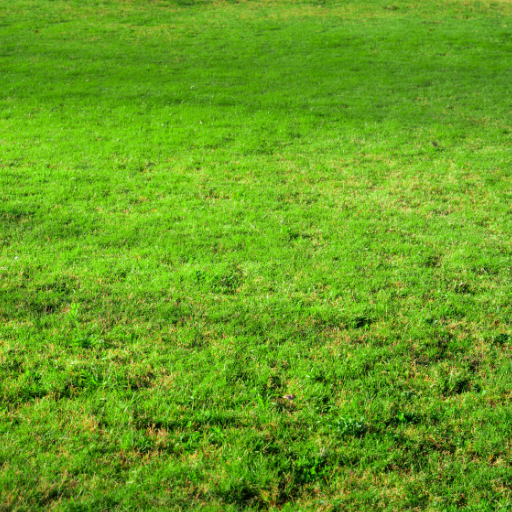
Nitrogen depletion in your lawn can result in various negative impacts that affect its appearance and health. In particular, grasses deficient in nitrogen turn yellow due to a shortage of chlorophyll production called chlorosis. This yellowing usually starts at the leaf tips and moves down towards the base. Growth rates are retarded, leading to a thin and sparse turf as organisms fail to generate enough proteins or enzymes needed for growth. Moreover, such lawns become prone to diseases and weeds since healthy thickly grown turf is lost due to nitrogen deficit. Therefore, replenishing nitrogen deficiency by using an appropriate fertilizer program ensures that the lawn grows lush, green and strong again.
Signs of Nitrogen Deficiency in Lawns
Common symptoms of shortage of nitrogen in lawns include general yellowing or pale green color which begins with older leaves before spreading throughout the whole plant. The turf appears patchy and thin as a result of very slow growth rate. Additionally, blades may get more brittle and open to physical damage .In extreme cases ,parts of the lawn may show dead grass or bare spots making it vulnerable to weed or disease invasion. Correctly addressing nitrogen deficiency requires following a balanced fertilization programme based on soil tests aimed at sustaining proper nutrient levels for good lawn health.
Treating Nitrogen Deficiency with High Nitrogen Fertilizers
The treatment of nitrogen insufficiency using high nitrogen fertilizers
High Nitrogen Fertilizer Application to Curing Nitrogen Deficiency: High Nitrogen Fertilizer Selection and Application for Best Results. In their N-P-K formula, where the first value stands for nitrogen, phosphorous, and potassium, among other things, high nitrogen fertilizers are normally richer in this nutrient (nitrogen) than others. Some common ones include 28-0-0, 30-0-0, and 46-0-0, where the first figure is the weight percentage of N on a product basis.
- Selection of Fertilizer: Urea (46-0-0) is a highly concentrated nitrogen fertilizer that is rapidly absorbed by grass. Alternatively, ammonium nitrate (34-0-0) and ammonium sulfate (21-0-0) also offer high nitrogen content and additional benefits such as a slight acidifying effect, which is useful in alkaline soils.
- Application Rates: Proper application rates are crucial to avoid over-fertilization, leading to lawn burn and pollution run-off. General recommendations suggest applying 1 pound of nitrogen per 1,000 square feet of lawn. For precision, conduct a soil test to determine existing nitrogen levels and adjust accordingly.
- Timing and Frequency: The timing of fertilizer application significantly affects its efficacy. Apply nitrogen fertilizers in the early spring and late fall when grass is actively growing. A split application—half in the spring and half in the fall—can optimize nutrient uptake and ensure sustained growth throughout the growing season.
- Method of Application: Broadcast or drop spreaders can achieve even distribution of fertilizer. Water the lawn thoroughly after application to facilitate nitrogen absorption and minimize volatilization losses.
Adhering to these technical parameters and practices can effectively address nitrogen deficiency and promote a healthy, lush, and green lawn.
Long-term Lawn Care Strategies to Prevent Deficiency
Soil testing on a regular basis is the backbone of proactive lawn care, which helps in preventing nitrogen deficiency. This means that annual and biannual soil tests can help you keep track of nutrient levels and pH as well as adjust your fertilization practices using exact information. In addition, when grass clippings are left on the lawn after mowing—a practice known as grasscycling—the key nutrients return to the soil, thereby decreasing total reliance on artificial fertilizers. Additionally, putting organic materials such as compost into the soil improves fertility and structure enabling better microbial activity and nutrient holding capacity. Uniform aeration and overseeding at least once every year especially during fall assists in developing stronger root systems resulting in dense lawns that can withstand nutrient loss. Finally, following recommended mowing heights for different types of turfgrass minimizes stress, leading to a vigorous and efficient ecosystem for supplying nutrients.
What are the Best Products for High Nitrogen Lawn Care?
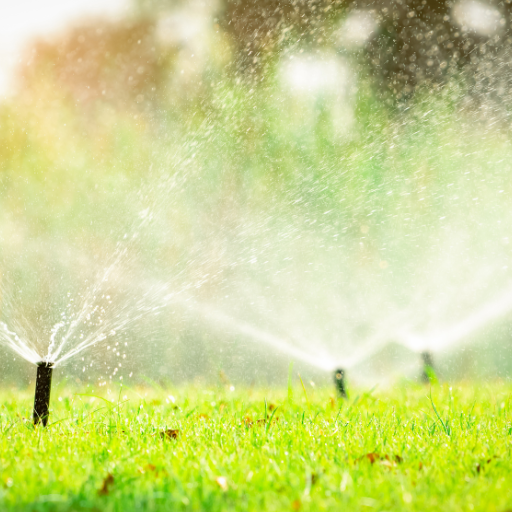
For lawn care with high contents of nitrogen, the best products must be chosen, which are fertilizers that can take a well-rounded and sustainable approach to lawn health. Find high nitrogen content type fertilizers with slow release formulations ideally for continuous nutrient supply for long periods. Organic options could also help by promoting soil health through increased microbial activity and improved nutrient availability. Also, consider those that have other nutrients, such as iron and magnesium, which contribute towards the overall good condition of lawns. Granular or liquid each has its own merits; granular is easily applied and lasts longer but the latter provides nutrients instantly and in targeted manner.It is important to prioritize fertilizers that comply with recommended environmental safety standards and then reduce runoff and pollution.
Reviewing Customer Feedback
Firstly, users really admire the regularity provided by slow-release formulations because they ensure constant delivery of essential nutrients without burning out the plant parts. Secondly, some customers say organic preparations increase soil fertility by stimulating microorganisms’ movement in it, allowing better acquisition of useful elements. Furthermore, their roles in maintaining lush green gardens are widely praised from different angles, mostly bringing up iron and magnesium components alongside other micronutrients. The ease of application comes to mind when discussing these reviews where granulated ones receive much acclaim while liquid ones are celebrated because of their quick results since they deliver what is needed at only that spot (Zhang & Schau 2009). There is also a reference made to the environment concerning the sustainability of lawn care products as well as adherence to safety standards.
Where to Buy High Nitrogen Fertilizer
To buy nitrogenous fertilizer online from popular retailers is quite convenient especially if you place orders at any time you like. Home Depot offers several types of high-nitrogen fertilizers including highly rated granular or liquid ones for various lawn needs. They have a diverse range of organic versus synthetic product lines. Having been reviewed by their customers’ opinions on these sites before buying them may make your choice easier. You can also find a wide selection of high-nitrogen fertilizers at Lowe’s, along with product details and options for either pickup or delivery. Each retailer ensures access to high-quality fertilizers catering to various lawn maintenance requirements.
What are Common FAQs About High Nitrogen Lawn Fertilizers?
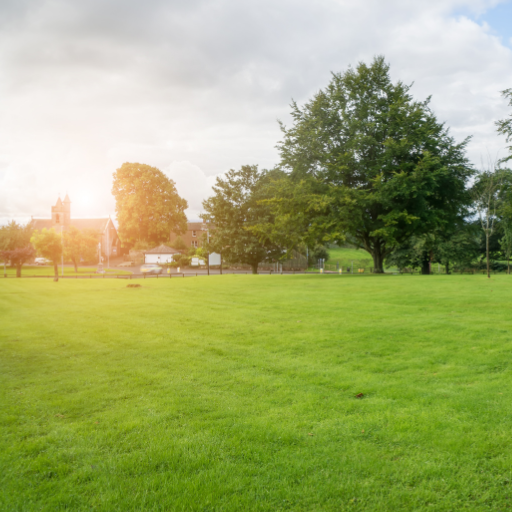
How often should high nitrogen fertilizers be applied? To get the best results, these fertilizers are usually suggested for use every six to eight weeks throughout the growing season. Are High Nitrogen Fertilizers Safe for Kids and Pets? Many high-nitrogen fertilizer products can be safely used as recommended by their manufacturers, but it is wise to keep your pets away from the lawn until the fertilizer has been watered in and the grass has dried. Moreover, homeowners always ask what time of day they should put on high nitrogen fertilizers. Therefore, it is better to apply them early in the morning or late afternoon when the heat is not so much because this will ensure that evaporation does not take place quickly, thereby reducing the effectiveness of the fertilizer. Lastly, do all types of grass tolerate high nitrogen fertilizers? However most lawns respond positively to this type of fertilizer apart from which you need to read through its label before purchasing it for your particular grass.
Does High Nitrogen Fertilizer Apply to Any Kind of Grass?
High Nitrogen Fertilisers can generally be used on a wide array of different types; however, it is important that the specific needs of your turf is considered in order to achieve maximum returns without risking any damage. On the one hand, cool-season grasses such as Kentucky Bluegrass, Fescue, and Ryegrass respond well to high nitrogen fertilizers, especially during spring and fall seasons when there is greater growth development. Conversely warm season lawns like Bermuda Grass, Zoysia Grass and St. Augustine also greatly benefit from an application with high-nitrogen fertilisers mainly during their growing season which occurs in late spring and summer months.
Technical parameters to consider when selecting high nitrogen fertilizers include:
- N-P-K Ratio: This refers to the concentration of nitrogen (N), phosphorus (P), and potassium (K) in the fertilizer. High nitrogen fertilizers often have ratios like 30-0-10 or 46-0-0, indicating a high percentage of nitrogen.
- Application Rate: Most high nitrogen fertilizers recommend an application rate of about 1 pound of nitrogen per 1,000 square feet. Following the manufacturer’s instructions is essential to avoid over-fertilization, which can harm the grass and the surrounding environment.
- Release Type: High nitrogen fertilizers are available in both quick-release and slow-release formulations. Quick-release fertilizers provide immediate nitrogen availability, making them ideal for rapid growth stimulation, while slow-release variants ensure a steadier, prolonged supply of nutrients.
By adhering to these guidelines and carefully selecting a fertilizer that matches your grass type’s requirements, you can enhance lawn health and achieve lush, green growth.
Can Nitrogen Be Over Fertilized?
Excessive use of nitrogen as a fertilizer leads to several negative effects on your lawn and the environment. Moreover, increased growth rate in grass due to excess nitrogen will result in thatch build-up and more mowing requirements. Moreover, over-application can result in nutrient imbalances, leading to decreased resistance of grass to diseases and pests. What is more, high levels of nitrogen from lawns add into water pollution affecting aquatic ecosystems nearby. Therefore, it is advisable to strictly follow recommended application rates and schedules so as not to fall into these trap or get rid of such frustrating situations which are necessary for maintaining a healthy lawn.
When Will You Begin Seeing Results After Applying It?
The period within which you can expect observable outcomes after using nitrogen fertilizers depends on various factors like the type of the fertilizer used and the existing conditions of the grass. If a fast-acting (water-soluble) fertilizer is applied, then visible changes in coloration as well as improved growth should become noticeable within 1-5 days, with some improvements expected ideally at around three days after application before it becomes evident even if everything cannot be perfect during this period.. On the other hand, slow-release fertilizers take about two weeks for significant visual alterations since they release nutrients slowly over time, much unlike conventional fertilizers, which are done all at once.There are also climatic factors such as temperature and moisture content plus initial state of healthiness that determine the pace at which plant food gets absorbed by roots hence showing positive signs of improvement after its employment.
Frequently Asked Questions (FAQs)
Q: What are the benefits of using high nitrogen 28-0-0 lawn food?
A: High nitrogen 28-0-0 lawn food encourages vigorous growth, resulting in a denser and more attractive lawn. The nitrogen-rich formula promotes green and healthy grass, making it ideal for keeping your lawn lush and vibrant.
Q: How often should I apply liquid nitrogen fertilizer to my lawn?
A: The application frequency of liquid nitrogen fertilizer can vary based on the specific product and your lawn’s needs. Generally, applying liquid lawn food every 4-6 weeks during the growing season is recommended for optimal results in achieving a greener lawn.
Q: Can I use high nitrogen 28-0-0 liquid lawn food on all grass types?
A: Yes, high nitrogen 28-0-0 liquid lawn food is a versatile fertilizer suitable for all grass types. Its balanced nutrient profile ensures it meets the needs of different varieties of turf, helping to correct nitrogen deficiency and promote healthy green growth.
Q: What is the difference between liquid fertilizer and granular fertilizer?
A: Liquid fertilizer is applied in liquid form, allowing for faster nutrient absorption by the grass, which leads to quicker results. Granular fertilizer, on the other hand, is applied in a solid form that gradually breaks down, providing a slow release of nutrients over time. Both types have their benefits, with liquid fertilizer being ideal for quick greening and granular fertilizer being effective for sustained nutrient release.
Q: How does slow release nitrogen benefit my lawn?
A: Slow release nitrogen provides a steady supply of nutrients over an extended period, reducing the need for frequent applications. This type of nitrogen helps avoid nutrient spikes and minimizes the risk of lawn burn, ensuring consistent growth and a healthy, dark green lawn.
Q: How do I apply liquid lawn food with a universal sprayer?
A: To apply liquid lawn food using a universal sprayer, first mix the recommended amount of fertilizer with water in the sprayer tank. Then, evenly spray the mixture over your lawn, ensuring thorough coverage. Follow the product instructions for precise application rates and timing to achieve the best results.
Q: Can liquid grass fertilizer cause lawn burn?
A: While liquid grass fertilizer can cause lawn burn if overapplied, following the recommended guidelines and application rates will minimize this risk. Always read the product label and instructions carefully to avoid over-fertilizing and ensure your lawn remains healthy and green.
Q: What is the recommended coverage area for 1 gallon of high nitrogen 28-0-0 liquid lawn food?
A: The coverage area for 1 gallon of high nitrogen 28-0-0 liquid lawn food varies depending on the product’s concentration and application method. Generally, 1 gallon can cover up to 16,000 square feet. Always refer to the product label for specific instructions on coverage.
Q: How does high nitrogen 28-0-0 liquid lawn food help in correcting nitrogen deficiency?
A: High nitrogen 28-0-0 liquid lawn food provides an immediate source of nitrogen, which is crucial for correcting nitrogen deficiency in your lawn. The nitrogen encourages vigorous growth and greening, quickly revitalizing your grass and restoring its health and vibrancy.






